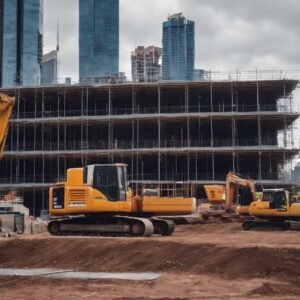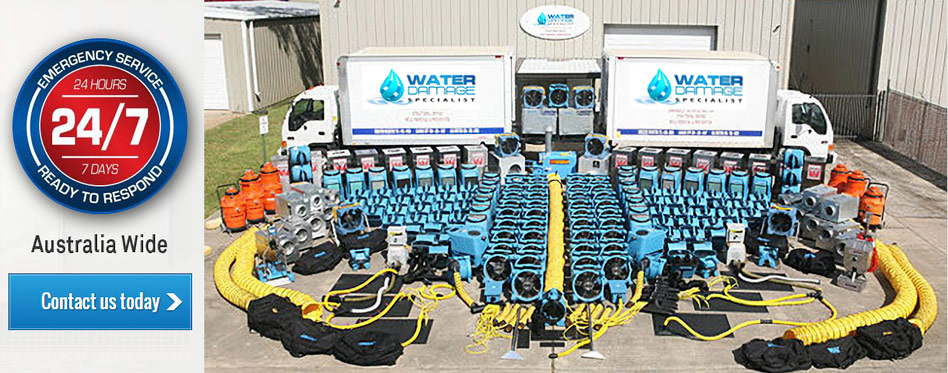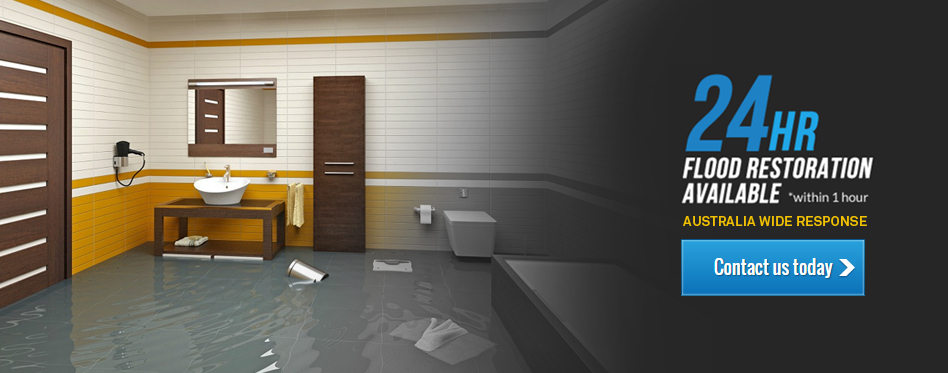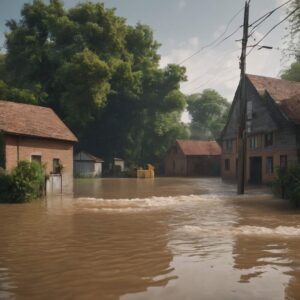Constructing Resilience: Building in Flood Hazard Areas in Australia
Navigating the Deluge: Building for an Uncertain Future in Australia’s Flood-Prone Zones
 Australia, a country known for its stunning landscapes and natural diversity, also faces some unique challenges, one of which is the threat of flooding. Floods can be incredibly destructive, causing extensive damage to homes, and infrastructure, and, most importantly, endangering lives. As Australia grapples with the impacts of climate change, the need for resilient construction practices in flood-prone areas has never been more crucial.
Australia, a country known for its stunning landscapes and natural diversity, also faces some unique challenges, one of which is the threat of flooding. Floods can be incredibly destructive, causing extensive damage to homes, and infrastructure, and, most importantly, endangering lives. As Australia grapples with the impacts of climate change, the need for resilient construction practices in flood-prone areas has never been more crucial.
In this in-depth exploration, we delve into the complex world of constructing buildings in flood-prone regions of Australia. We’ll uncover the distinct challenges that come with these areas, the innovative approaches being taken, and the essential roles that architecture, engineering, and policy play in creating structures that can withstand the unpredictable forces of nature.
Understanding Flood Hazards in Australia
Australia’s landscape is as diverse as it is beautiful, but it’s also prone to various forms of flood hazards. From the expansive catchment areas of major rivers to the sudden and intense flash floods in urban regions and the relentless encroachment of the sea in coastal areas, Australia faces multifaceted flood challenges.Riverine floods, often triggered by heavy rainfall and overflowing riverbanks, are a significant concern in many regions. Flash floods, caused by intense and localized rainfall, can swiftly turn calm streets into raging torrents. Coastal floods, driven by storm surges and rising sea levels, pose a growing threat to coastal communities. Understanding the unique characteristics of these flood hazards is the first step in building resilience.
Sydney’s Experience with Flooding
The Hawkesbury-Nepean Valley, often referred to as the “Food Basket of Sydney,” is both a thriving agricultural region and a flood-prone area. Over the years, this region has faced numerous floods that have shaped its history and landscape. From the infamous 1867 flood to more recent events like the 1990 flood, this district has had its share of challenges. However, it has also demonstrated remarkable resilience, with residents and authorities working together to adapt to the unpredictable forces of nature.
Sydney’s Northern Beaches face a different water-related challenge: coastal erosion. Rising sea levels and more frequent storms are eroding the sandy shores, threatening beachfront homes and communities. Balancing the preservation of coastal beauty with the reality of a changing climate is a complex challenge that Sydney’s Northern Beaches must confront head-on.
Flood Challenges in Melbourne
The Yarra River, with its catchment area sprawling through the city and its suburbs, poses challenges for urban planners and residents alike. Melbourne’s eastern suburbs, including areas like Heidelberg and Abbotsford, have had their share of flooding incidents, requiring innovative flood mitigation strategies and ongoing community engagement.
South Yarra, an affluent suburb in Melbourne, has faced recurring flood threats, especially in the low-lying areas near the Yarra River. Flash floods and riverine inundation have led to damaged homes and disrupted lives. The suburb’s response to these challenges has involved elevated home designs, flood-resistant infrastructure, and community initiatives to build resilience. The balance between preserving the appeal of South Yarra’s riverside properties and safeguarding them from flood risks is a testament to Melbourne’s adaptability.
Brisbane’s Resilience Along the River
Brisbane, affectionately known as the River City, has a close connection with the Brisbane River. Floods have played a pivotal role in shaping the city’s history, most notably in the 2011 floods that submerged vast areas of the city. Flood districts such as West End, New Farm, and St. Lucia have faced the fury of the river’s surge. In response, Brisbane has adopted innovative flood mitigation strategies, including elevated homes and flood-resilient infrastructure. These districts now serve as beacons of resilience and recovery, showcasing the city’s determination to coexist with water.New Farm, an inner suburb of Brisbane, is no stranger to the challenges posed by flooding. The 2011 floods were a defining moment for the community, resulting in significant damage to homes and infrastructure. However, the suburb’s resilience was evident as residents, authorities, and local businesses rallied together to rebuild. New Farm’s flood-resistant designs and ongoing commitment to flood preparedness are a testament to the strength of Brisbane’s River City.
St. Lucia, a leafy suburb on the banks of the Brisbane River, faced the brunt of the 2011 floods. The breach of the river’s banks led to extensive inundation, affecting homes, the University of Queensland, and vital infrastructure. Since then, St. Lucia has undergone a remarkable transformation, with flood-resistant designs and mitigation efforts to protect the community from future flood events. The suburb’s story is a testament to Brisbane’s resolve to learn from past challenges and create a more resilient urban landscape.
National Efforts in Response to Flood Challenges
Australia’s urban centres are not isolated in their flood struggles. The challenges presented by climate change and unpredictable weather patterns require a united front. Initiatives such as the FloodSmart Communities Program aim to equip communities with the knowledge and resources to combat flooding. Flood mapping, early warning systems, and adaptive urban design are becoming increasingly vital in cities across the nation.National Flood Mapping and Early Warning Systems: Australia’s unique geography and climate variability demand a robust system for predicting and managing flood events. The integration of advanced flood mapping and early warning systems has become indispensable. These technologies provide communities with real-time information, enabling residents and authorities to make informed decisions during flood events. For cities like Sydney, Melbourne, and Brisbane, this technological leap is crucial in safeguarding lives and property.
The Role of Building Codes and Regulations
Australia has a well-established set of building codes and regulations that govern construction in flood-prone areas. These regulations serve as a crucial foundation for resilient construction.One of the key aspects is setting minimum floor levels to ensure that habitable spaces are elevated above the expected flood levels. This means that in many flood-prone regions, ground-level garages and storage spaces have become a thing of the past. The idea is to keep the living spaces above the waterline, reducing damage and keeping occupants safe.
Additionally, building materials and methods are carefully considered. More flood-resistant materials, such as concrete, are often used for the lower levels of buildings. Special attention is given to creating sealed openings and walls that can withstand the pressure of floodwaters. These regulations are continuously updated to reflect changing flood patterns and risk assessments.
Innovative Building Techniques
In response to the growing threat of floods, architects and engineers are pushing the boundaries of innovation. They are finding creative ways to make buildings more resilient in the face of rising waters.Raised and Flood-Resistant Foundations: One of the most effective approaches is elevating buildings above flood levels. This can be achieved through raised foundations. Some buildings are designed with the ground floor serving as a buffer zone that can flood without causing significant damage, while the living spaces are elevated above.
Amphibious Houses: Another innovative concept is amphibious houses. These are homes that can float on the surface of rising floodwaters. They are tethered to guideposts that allow them to rise with the water level, reducing the risk of damage.
Adaptable Building Designs: Adaptability is key to resilience. Some buildings are designed to respond to flood threats by allowing water to flow through certain areas or utilizing materials and systems that can be easily cleaned or replaced after a flood event.
Community Resilience and Disaster Preparedness
 Building resilience extends beyond individual structures. In flood-prone regions, communities play a pivotal role in responding to and mitigating the impact of floods.
Building resilience extends beyond individual structures. In flood-prone regions, communities play a pivotal role in responding to and mitigating the impact of floods.
Community Engagement: Educating the community about the risks of flooding and how to prepare for and respond to flood events is essential. This includes creating flood evacuation plans and conducting regular drills.
Early Warning Systems: Early warning systems, often reliant on technology, are indispensable for flood-prone areas. Timely information about rising water levels allows residents to take action, protecting both their lives and property.
Disaster Preparedness: Residents are encouraged to have emergency kits on hand, including essentials like food, water, and first aid supplies. These kits can be a lifeline in the critical hours following a flood event.
Case Studies: Resilient Structures in Flood-Prone Areas
Through enlightening case studies, we’ll showcase real-world examples of flood-resistant buildings in Australia. These examples will illustrate the principles of design and construction that contribute to their resilience, providing valuable insights for future projects.The National Museum of Australia: The National Museum of Australia, located in Canberra, is a prime example of a resilient design. Situated near Lake Burley Griffin, the museum was built with flood resilience in mind. Its underground exhibition space is designed to withstand flooding, and the building itself is elevated to reduce flood risk.
The Seahaven Project: On the Gold Coast, the Seahaven Project is a massive development that’s set to become one of Australia’s largest amphibious communities. The homes are designed to float on water and rise with flood levels, protecting both property and lives.
The Grantham Flood Resilience Project: The town of Grantham in Queensland is no stranger to devastating floods. Following the 2011 floods that claimed lives and destroyed homes, the Grantham Flood Resilience Project was initiated. This project includes raising homes, building levees, and creating flood-resistant infrastructure to protect the town from future flood events.
Future Challenges and Opportunities
As we navigate an increasingly unpredictable climate, constructing buildings in flood-hazard areas requires a holistic approach. Building codes must continue to evolve to reflect changing flood patterns and risk assessments. Sustainable building materials that can withstand water exposure and recover quickly after a flood are gaining traction.Innovative building techniques and adaptable designs will continue to shape the future of flood-resistant construction. The concept of floating and amphibious houses is likely to become more common, especially in coastal regions facing the dual threat of rising sea levels and increased storm surges.
Moreover, community resilience and disaster preparedness will play a pivotal role in mitigating the impact of floods. Community engagement, early warning systems, and disaster preparedness will be the cornerstones of collective action to protect lives and property.
Conclusion
Australia’s battle with flood hazards is ongoing, and the resilience of its buildings and communities is of paramount importance. With climate change accelerating, the challenges of building in flood hazard areas are likely to intensify. However, the country is rising to the challenge, and innovation and collaboration are shaping the future of construction in flood-prone regions. The construction of buildings in flood hazard areas is not just about erecting structures; it’s about building resilience, redefining what it means to build in flood-prone regions, and creating a future where communities are prepared, buildings are adaptable, and lives are protected.When facing the aftermath of water-related disasters, choosing the right water damage specialist is crucial. Our team stands out as your trusted partner in times of crisis. With a proven track record in drying wet carpets, water damage restoration, mould removal, and flood cleanup, we offer more than just services; we provide peace of mind. Our experienced professionals bring a wealth of expertise to every project, ensuring swift and effective solutions to mitigate water damage’s impact. We prioritize your safety and well-being, striving for the highest standards of quality in each task we undertake. From the moment you engage our services, you can rest assured that your property is in capable hands. When you choose Water Damage Specialist, you’re not just hiring a service; you’re investing in the restoration of your home or business with unwavering dedication to excellence.
- Navigating Insurance Claims for Water or Flood Damage in Your Australian Home - December 5, 2023
- Understanding the Environmental Impact on Water Damage in Homes - November 27, 2023
- Navigating the Dynamics of Flood Zones in Melbourne: Understanding Risks, Impacts, and Resilience Efforts - November 24, 2023







